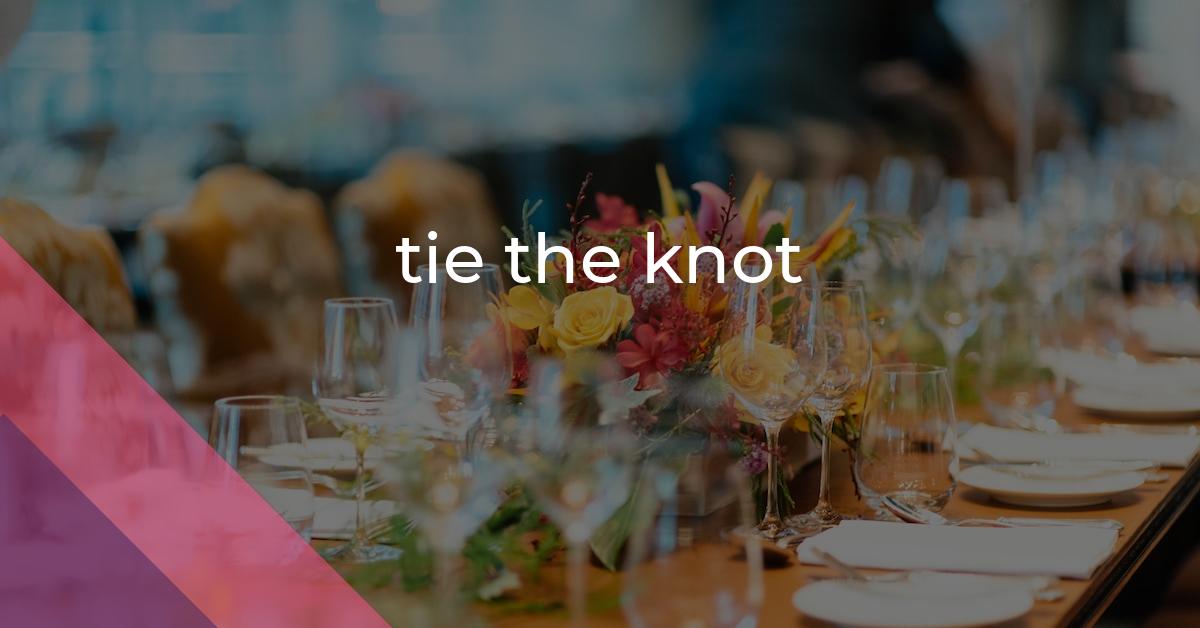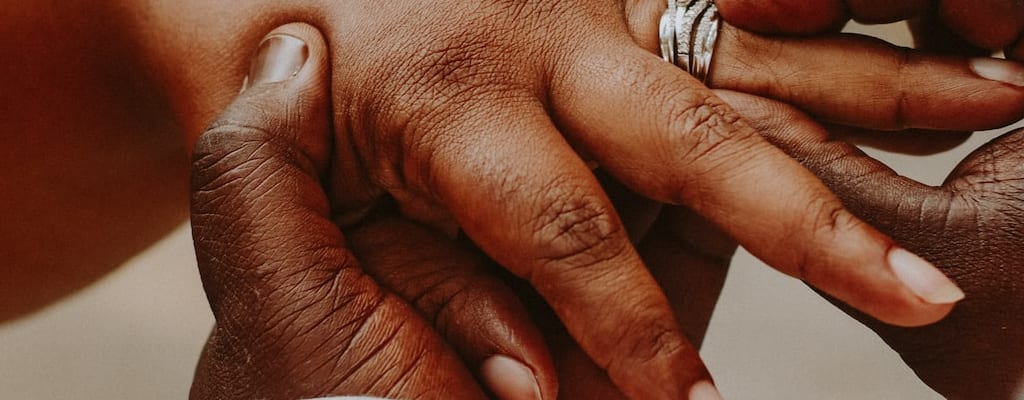tie the knot: Idiom Meaning and Origin
What does ‘tie the knot’ mean?
The idiom "tie the knot" means to get married or to enter into a marriage covenant. It is a metaphorical reference to the act of tying a knot to secure something, symbolizing the commitment and union between two individuals.

Idiom Explorer
The idiom "wrap up" means to finish or complete something, typically in a timely manner.
It is often used to indicate the end of a task, project, or event.
The idiom "under lock and key" means to be securely locked away or guarded, making it difficult for someone or something to access or escape.
The idiom "turn the tide" means to change the course or direction of a situation, typically in a positive way, especially when it seemed to be going against someone or something.
The idiom "turn into" means to undergo a transformation or change, typically resulting in becoming something else or adopting a different form or state.
The idiom "tug one's forelock" means to show excessive respect, subservience or deference towards someone in a way that is considered obsequious or fawning.
The idiom "town and gown" refers to the relationship or conflict between a university town (representing academics/students) and the local community (representing residents). It symbolizes the clash, or sometimes cooperation, between these two distinct groups within a community.
The idiom "to the T" means to do something perfectly or exactly according to expectations or specifications.
The idiom "tooth-and-nail" means to fight or compete fiercely and aggressively, using every means necessary to achieve victory or success.
The idiom "to do with" is used to indicate a connection or relevance between two things or people. It implies that something relates to, is associated with, or is about a particular subject or topic.
The Origins
"Tie the knot" is a popular idiom that means to get married or enter into a marriage commitment. It's a commonly used phrase in the English language and has been around since the 17th century. One possible origin of this phrase is the ancient Celtic tradition of handfasting, where a couple's hands were tied together during their wedding ceremony. This act symbolized the binding of their union and is considered a precursor to the modern concept of tying the knot.
Another potential origin of the phrase can be traced back to nautical traditions. In sailing, tying knots is essential for securing ropes and lines. Knots are known to represent strength, reliability, and stability. Building on this symbolism, "tie the knot" may have emerged as a metaphor for forming a secure and lasting bond through marriage.
The idiom gained popularity during the 19th century and can be found in various literary works and newspapers from that time. This indicates its widespread acceptance and understanding by the general public. Over time, "tie the knot" became firmly established in the English language, and today it continues to be used in contemporary contexts.
It is common to see the idiom "tie the knot" in wedding invitations, announcements, and conversations about marriage. It adds a touch of light-heartedness or playfulness to discussions about matrimony. The idiom's simplicity and clarity have contributed to its enduring popularity and widespread usage. It effectively represents marriage as a tangible knot, reflecting the societal understanding of a marriage commitment as a binding and unbreakable union.
Now, let's explore how "tie the knot" relates to other idioms such as "tie in", "tie up", "tie up loose ends", "tie in with", and "knit together". These idioms share a common theme of connection and unity.
The idiom "tie in" refers to the act of connecting or relating one thing to another. In the context of marriage, "tie the knot" can be seen as tying two individuals together, connecting their lives and futures. It represents the unity and bond formed through marriage.
"Tie up" means to secure or bind something tightly. Just as knots are used to secure ropes and lines in nautical settings, "tie the knot" symbolizes the act of securely binding two individuals in marriage. It signifies the commitment and dedication shared between partners.
"Tie up loose ends" is an idiom that means to complete or resolve unfinished tasks or matters. In relation to marriage, "tie the knot" can be seen as tying up any loose ends in a couple's relationship, addressing unresolved issues or concerns before committing to a lifelong partnership.
"Tie in with" means to connect or coincide with something. In the context of marriage, "tie the knot" can be seen as the merging of two lives, values, and goals into a unified whole. It represents the compatibility and harmony between partners.
The idiom "knit together" refers to the act of creating a strong bond or connection between people or things. Just as knitting intertwines threads to create a fabric, "tie the knot" symbolizes the intertwining of two individuals' lives in marriage. It signifies the close relationship and shared experiences between partners.
The idiom "tie the knot" holds a special place in the English language, representing the commitment and unity found in marriage. Its origins may be rooted in ancient traditions like handfasting or nautical practices of tying knots. Regardless of its exact origins, the idiom has become deeply ingrained in our cultural lexicon and continues to be used to describe the act of getting married. Through idioms like "tie the knot," we can appreciate the expressive power of language and the depth of meaning it brings to our lives.
Example usage
Examples of how the idiom *tie the knot* can be used in a sentence:
- After dating for several years, John and Emily decided to tie the knot and get married.
- They are planning a big wedding ceremony to celebrate tying the knot.
- Many couples choose to tie the knot in a destination wedding to make it more memorable.
More "Marriage" idioms



